
The Battle of Lützen, fought on 6 November 1632, is considered one of the most important battles of the Thirty Years' War. Led by the Swedish king Gustavus Adolphus, an Allied army primarily composed of troops from Sweden, Saxony, and Hesse-Kassel, narrowly defeated an Imperial force under Albrecht von Wallenstein. Both sides suffered heavy casualties, with Gustavus himself among the dead.

The Battle of Nördlingen took place on 6 September 1634 during the Thirty Years' War. A combined Imperial-Spanish force inflicted a crushing defeat on the Swedish-German army.

Johan Banér was a Swedish field marshal in the Thirty Years' War.

Count Nils Brahe was a Swedish soldier and younger brother of Per Brahe and Margareta Brahe. He served with distinction under King Gustavus Adolphus, who regarded him as the best general in the Swedish army after Lennart Torstenson.

is a town in the Burgenlandkreis district of Saxony-Anhalt, Germany.

Dodo Freiherr zu Innhausen und Knyphausen was a German professional soldier who saw extensive service in the Thirty Years' War (1618–1648), rising to the rank of Field Marshal in Swedish service in 1633.

The Battle of Breitenfeld or First Battle of Breitenfeld, was fought at a crossroads near Breitenfeld approximately 8 km north-west of the walled city of Leipzig on 17 September, or 7 September, 1631. A Swedish-Saxon army led by King Gustavus Adolphus of Sweden and Saxon Elector John George I defeated an Imperial-Catholic League Army led by Generalfeldmarschall Johann Tserclaes, Count of Tilly. It was the Protestants' first major victory of the Thirty Years War.

Ottavio Piccolomini, 1st Duke of Amalfi was an Italian nobleman whose military career included service as a Spanish general and then as a field marshal of the Holy Roman Empire.
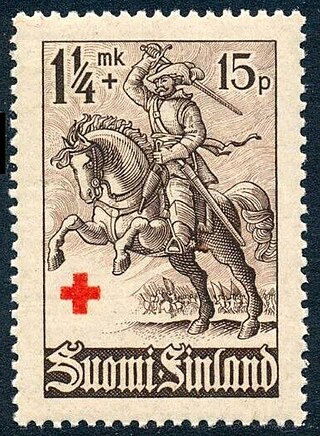
Hakkapeliitta is a historiographical term used for a Finnish light cavalryman in the service of King Gustavus Adolphus of Sweden during the Thirty Years' War. Hakkapeliitta is a 19th-century Finnish modification of a contemporary name given by foreigners in the Holy Roman Empire and variously spelled as Hackapelit, Hackapelite, Hackapell, Haccapelit, or Haccapelite. These terms were based on a Finnish battle cry hakkaa päälle, commonly translated as 'Cut them down!'

The Heilbronn League was formed in the Free Imperial City of Heilbronn, on 23 April 1633, during the Thirty Years' War. Led by Sweden, it brought together various Protestant states in western and northern Germany. It was supported by Saxony and Brandenburg-Prussia, although they were not members.

Torsten Stålhandske was a Swedish officer in the Swedish army during the Thirty Years' War. He was the son of Torsten Svensson (Stålhandske), a noble military officer of Swedish ancestry from West Gothland, and Carin Lydiksdotter Jägerhorn, of Finnish nobility from southern Finland. Torsten's father died in the Battle of Stångå when he was four years old, and his mother married a Scottish soldier, Major Robert Guthrie.

The Life Regiment Hussars is one of the world's oldest regiments still active. The regiment descends directly from units set up by King Gustav I of Sweden in 1536, when Sweden set up a draft of horses and men north and south of Stockholm. The regiment was very active in the 1600s and 1700s and helped win several key battles for Sweden on the European continent. Today, the regiment plays a central role in the Swedish Armed Forces and is the most active regiment in Swedish military international engagements.

The Battle of the Alte Veste was a significant battle of the Thirty Years' War in which Gustavus Adolphus' attacking forces were defeated by Wallenstein's entrenched troops.
Colonel Robert Munro of Foulis, also known as the Black Baron, was traditionally the 18th Baron of Foulis in Scotland. He was a soldier of fortune, who served in Germany under the banners of Gustavus Adolphus, king of Sweden. It is not certain how he got his epithet of the 'Black Baron', but quite possibly it was from the colour of his hair rather than any perceived martial ferocity. Although this Robert Munro is traditionally 18th Baron and 21st overall chief of the Clan Munro, he is only the 11th Munro chief that can be proved by contemporary evidence.

The allotment system was a system used in Sweden for keeping a trained army at all times. This system came into use in around 1640, and was replaced by the modern Swedish Armed Forces conscription system in 1901. Two different allotment systems have been in use in Sweden; they are the old allotment system and the new allotment system, the latter often referred to as just "the allotment system". The soldiers who were part of these systems were known as "croft soldiers" due to the small crofts allotted to them.
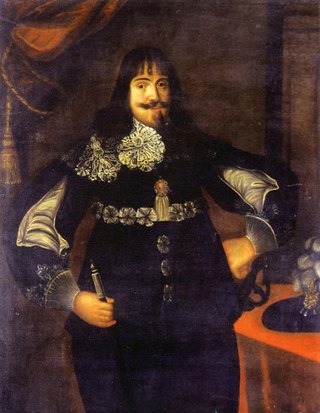
James Lumsden (1598–1660) was a Scottish soldier who served in the Swedish army of Gustavus Adolphus during the Thirty Years' War, and subsequently commanded Scottish Covenanter armies.

The Treaty of Stettin or Alliance of Stettin was the legal framework for the occupation of the Duchy of Pomerania by the Swedish Empire during the Thirty Years' War. Concluded on 25 August (O.S.) or 4 September 1630 (N.S.), it was predated to 10 July (O.S.) or 20 July 1630 (N.S.), the date of the Swedish Landing. Sweden assumed military control, and used the Pomeranian bridgehead for campaigns into Central and Southern Germany. After the death of the last Pomeranian duke in 1637, forces of the Holy Roman Empire invaded Pomerania to enforce Brandenburg's claims on succession, but they were defeated by Sweden in the ensuing battles. Some of the Pomeranian nobility had changed sides and supported Brandenburg. By the end of the war, the treaty was superseded by the Peace of Westphalia (1648) and the subsequent Treaty of Stettin (1653), when Pomerania was partitioned into a western, Swedish part, and an eastern, Brandenburgian part.
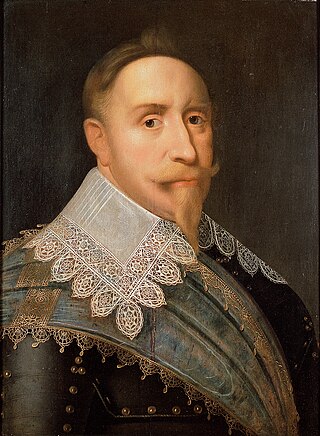
Gustavus Adolphus, also known in English as Gustav II Adolf or Gustav II Adolph, was King of Sweden from 1611 to 1632, and is credited with the rise of Sweden as a great European power. During his reign, Sweden became one of the primary military forces in Europe during the Thirty Years' War, helping to determine the political and religious balance of power in Europe. He was formally and posthumously given the name Gustavus Adolphus the Great by the Riksdag of the Estates in 1634.
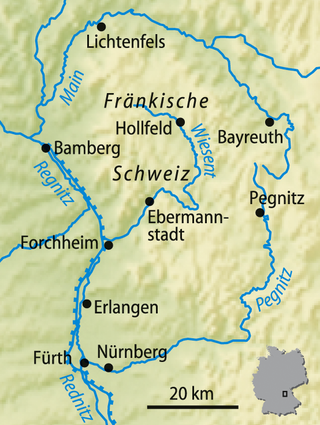
The Battle of Fürth was fought on 3 September 1632 between the Catholic forces of Holy Roman Emperor Ferdinand II and the Protestant forces of King Gustavus II of Sweden during the period of Swedish intervention in the Thirty Years War.
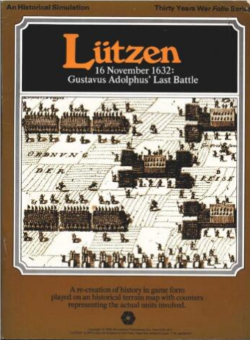
Lützen is a board wargame published by Simulations Publications Inc. (SPI) in 1976 that simulates the 1632 Battle of Lützen during the Thirty Years' War. Lützen was originally sold as one of four separate games packaged together in Thirty Years War, a "quadrigame". Many critics called it one of the better games of the four, and Lützen was also published as an individual game.



















